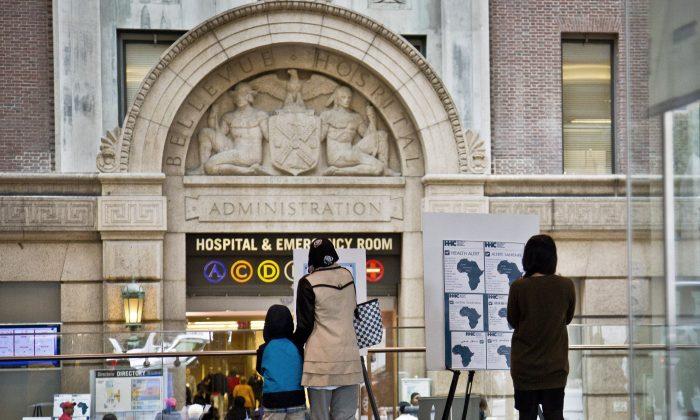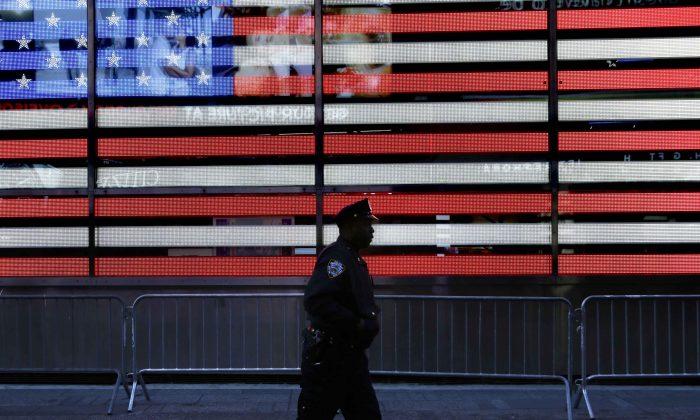NEW YORK—New York City’s disease detectives were off and running the moment the call came in from a doctor who suspected he had Ebola.
As hazmat-suited emergency teams were preparing to transport Dr. Craig Spencer to Bellevue Hospital, health workers were talking to him by phone, not just about his high fever and other symptoms but also about his recent movements and contact with other people.
Credits cards, subway passes and cellphone records were all clues that helped fill in a nearly hour-by-hour timeline.
New York’s first case of the virus ravaging West Africa is highlighting the behind-the-scenes work of the city’s team of sleuths, who track an outbreak at the source and seek to stop it from spreading.
“They’re able to work with an impossibly small amount of information,” said Denis Nash, an epidemiology professor who used to work at the Health Department. “They can find someone when the description is as little as ... ‘a light-skinned guy with a freckle on his cheek,’ and they do it discretely and professionally.”
In New York, about 200 doctors, epidemiologists, and other staff work together to piece together an outbreak through painstaking and detailed interviews with someone who was exposed and a retracing of whom they touched and where they walked.
Depending on the suspected incubation period, they track back weeks. They triangulate to determine where the disease has spread, test to figure out the illness, and come up with specialized solutions to stop it from spreading further.
Dr. Spencer’s Case
In the case of Spencer, a 32-year-old Doctors Without Borders physician who had returned from the Ebola-plagued Guinea less than a week before, they had a wealth of information—and that was highly unusual, said Dr. Jay Varma, the city’s deputy commissioner for disease control.
He said Spencer’s precise statements and the other clues painted a picture of his whereabouts in mere hours: He took three subway lines and a cab, went jogging, and walked the High Line parkway. He visited a coffee stand, a sandwich shop and a bowling alley.
Plus, they knew the suspected illness, the incubation period of 21 days, and the fact that a patient isn’t contagious unless they are symptomatic.
Spencer’s fiancée and two friends who had close contact with him remain under quarantine. But no one else has developed symptoms.
“He was incredibly helpful, and he understood the situation,” Varma said. “His honesty and his willingness to participate and give us every detail were really amazing.”
Usually it takes longer—because it’s a greater mystery.
“Often we don’t know what the illness is, or someone is too sick to talk to us, so we have to reconstruct their movements in other ways,” Varma said.
Or the disease spreads faster. Last year, epidemiologists asked such specific questions that tracked a fast-spreading measles outbreak down to one city intersection, where an infected person gave the airborne virus to another by simply passing them on the street.
If people are sickened at a restaurant, workers run through a checklist to determine whether the foodborne illness is localized or whether, say, salmonella was coming from suppliers.
The city works closely with the Centers for Disease Control and Prevention, which has a two-year program that teaches how to trace an outbreak. There are about 160 specialists assigned to cities and states around the country.
Nash, now a professor of epidemiology at the CUNY School of Public Health, served as the CDC specialist in New York and uncovered the first West Nile outbreak in the Western Hemisphere. People were coming down with meningitis and encephalitis, and they didn’t know why—he had to start from scratch figuring out what the common links were.
“The Health Department is responsible for protecting the health of all New Yorkers, and there are so many other illnesses to be worried about,” Nash said. “An outbreak like the Ebola case represents a threat, but you need to be able to respond to new threats while at the same time not diminishing the response to others.”
From The Associated Press




